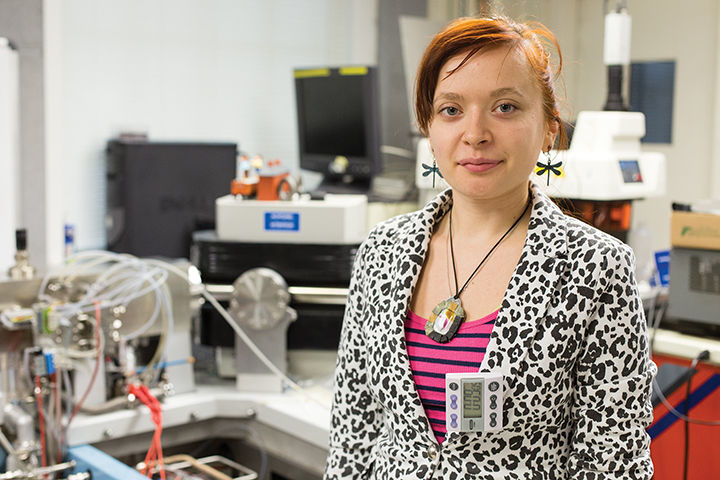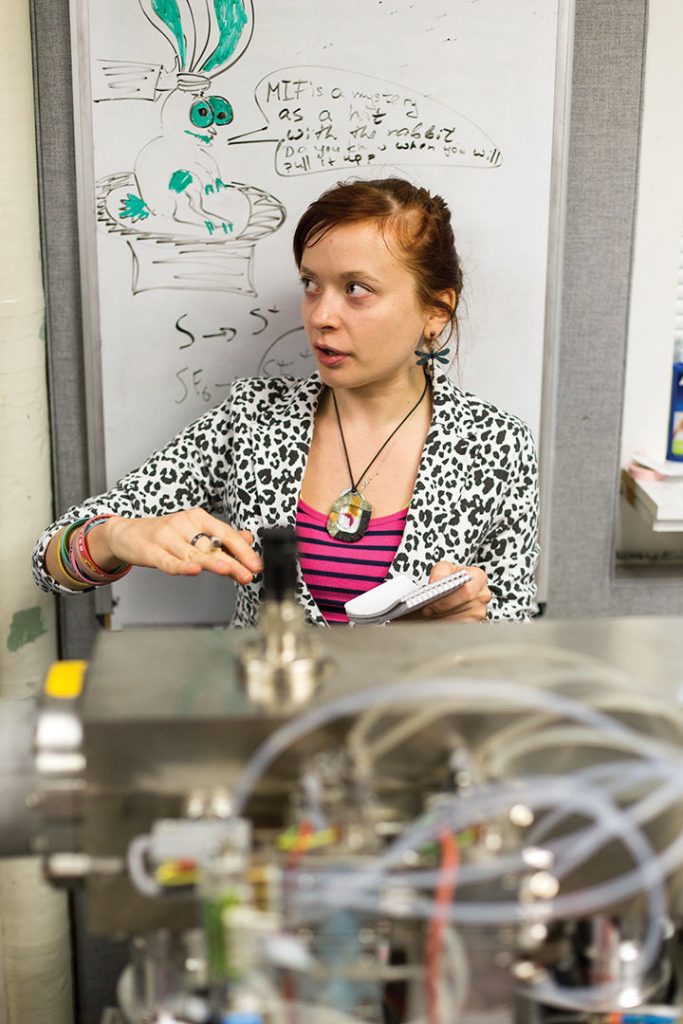Dinosaurs are easy.
Scientists know the Tyrannosaurus Rex and the Stegosaurus existed because they have their bones. But learning about ancient bacteria is not as straightforward — they’ve left almost no trace, unless experts know where to look.
Researchers from this university and the University of Western Australia published a study in the Nov. 7 issue of Science, in which they found indications of 2.5-billion-year-old microbes in a collection of Brazilian rocks. The evidence: a 3 percent depletion of a particular isotope of sulfur in the rock.
“We got very negative delta 34 S, which gives us the evidence sulfate-reducing bacteria was working,” said Iadviga Zhelezinskaia, the study’s lead author and a geology doctoral candidate at this university.
Unlike the oxygen many living things depend on, these particular microbes inhale sulfate, a compound of oxygen and sulfur.
Oxygen was in low supply until a few hundred million years later, when it greatly increased in the atmosphere during what is known as the Great Oxygenation Event. This study showed sulfate wasn’t common, either, but there was enough of it that these particular microbes could survive. This reveals a lot about the distant past of the world, said Alan Kaufman, a co-author of the study.
“It confirms our suspicions that these bacteria were active in the truly ancient oceans,” said Kaufman, who is a geology professor at this university. “It adds to a body of knowledge that helps us chart out the history of oxygen in the atmosphere, from a point when there was virtually none, to the 21 percent we have today.”
Zhelezinskaia said she found this by crushing carbonate and black shale rocks into a fine powder, then using acid to release the carbon dioxide and dissolve the carbonate. After a few more reactions, she then studied the sulfur isotopes in the pyrite residue — commonly known as fool’s gold — left over.
Normally, the various isotopes of sulfur would be expected to have similar mass, but concentration of sulfur-34 was about 3 or 4 percent lower than expected, said James Farquhar, a geology professor at this university and a co-author of the study.
“A 2 percent depletion tells us something happened,” he said. These sulfur-reducing microbes have an affinity for sulfur-32 rather than sulfur-34, meaning they take in more of the sulfur-32 isotope, and less sulfur-34 is preserved in the pyrite.
This study’s findings agreed with the findings of another study published in the same issue of Science, but a third study published there had different findings on the abundance of sulfur in the oceans at that time. Yet, Farquhar said he was confident in Zhelezinskaia’s findings.
“It could be that this is incorrect, and it could be there is another explanation for what she found, but I don’t think so,” he said.
Zhelezinskaia, who came to this state from Russia on a Fulbright scholarship and has since stayed here to continue her studies, said this research helped contribute how the early world evolved.
“Oxygen helped make this evolution of life,” she said, “so there are a lot of questions about how oxygen appeared, how it changed the ocean system, and can we apply the knowledge we’ve gotten to find other planets with the same atmosphere on earth.”
These bacteria break down organic material in sedimentary layers of the ocean, Kaufman said. They’re still around today in the black mud that smells like rotten eggs, which can be found in the Chesapeake Bay and around the world.
Though the bacteria may seem unassuming, they play an important role in the carbon cycle, where they release carbon into the atmosphere and helped the earth from becoming too cold, Kaufman said.
“What we have is a piece of the puzzle in the very early years,” Farquhar said. “It puts in a block of knowledge of what the oceans looked like and what controlled their chemistry about 2.5 billion years ago.”
Geology department chairwoman Roberta Rudnick, who was not involved in the study, said this research provides a glimpse into the ancient world.
“We have an ecosystem based upon these bacteria that was fully functioning long,long ago,” she said. “2.5 billion years ago.”
Iadviga Zhelezinskaia, a doctoral student and research assistant, poses for a portrait in her laboratory in the Chemistry Building.
Iadviga Zhelezinskaia, a geology doctoral student at this university, explains her research on ancient bacteria in her laboratory in the Chemistry Building.




